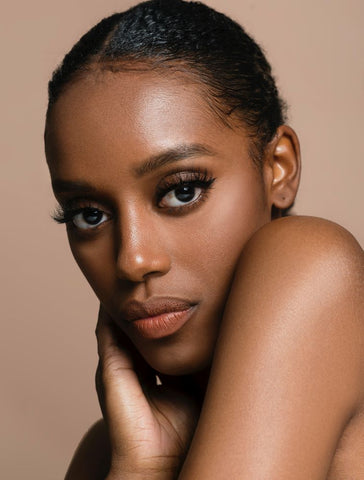10 myths about sun protection
- Sun damage is not possible in windy, cloudy or cool weather.
FALSE: You can suffer sun damage in windy, cloudy or cool weather. Sun damage is caused by ultraviolet (UV) radiation, not temperature. In summer, a cool or cloudy day can have a similar UV level as a hot, sunny day. If it's windy and your face is red, it's probably a sunburn. There is no such thing as a "windburn".
Sun damage is also possible on cloudy days, as UV radiation can penetrate some clouds, and may even be more intense due to reflection off the clouds.
Consult the UV index to find out the level of UV radiation.

- A fake tan darkens the skin, protecting it from the sun
FALSE: A tanning lotion doesn't improve your body's ability to protect itself from the sun, so you'll still need sun protection. Some fake tans have a sun protection factor (SPF), but they are often low and you still need to protect yourself.

- Sun protection is not necessary when using cosmetic products with built-in SPF.
FALSE: Unless cosmetics are labelled with an SPF of 30 or higher, you should wear extra suncream under your make-up if you're going to be in the sun for an extended period of time. If you're going to be in the sun for longer, use a separate suncream and reapply it every two hours, not just in the morning.
Be aware that most cosmetic products offer no protection or protection well below the recommended SPF 30.

- People with olive or coloured skin are not at risk of skin cancer.
FALSE: People with darker or olive skin tones can also develop skin cancer. Regardless of skin type, exposure to UV rays from the sun and other artificial sources, such as tanning beds, can cause permanent skin damage. People with skin types that are less likely to burn may still be at risk of developing skin cancer if UV exposure is excessive. It's still essential to be cautious with sun exposure.

- You can stay in the sun longer with SPF 50+ than with SPF 30+.
FALSE: No sunscreen acts as a shield, and sun protection should never be used to extend time spent in the sun.
While it may seem very different, SPF 50 offers only slightly better protection against UVB rays, which cause sunburn and increase the risk of skin cancer. SPF 30 sunscreens filter about 96.7% of UV rays, while SPF 50 sunscreens filter 98%. It is recommended to apply sunscreen with an SPF of 30 or higher before going outside, every two hours, and after swimming, sweating, or towel drying.

- Significant sun exposure is necessary to avoid a vitamin D deficiency.
FALSE: You do not need to expose yourself to potentially harmful UV rays to obtain more vitamin D. Research suggests that prolonged sun exposure does not further increase vitamin D levels but does increase the risk of skin cancer. When UV levels are at or above 3, most people produce enough vitamin D by spending just a few minutes in the sun, such as walking to the car or shops.
If you live in regions with low UV levels in winter (below 3), you can help maintain vitamin D levels by spending time outdoors around midday and engaging in physical activity. People at higher risk of vitamin D deficiency include those with naturally very dark skin, those with health conditions or on medications that affect vitamin D absorption, those who cover their skin for religious or cultural reasons, and those who have little to no sun exposure. If you think you might be at risk for vitamin D deficiency, talk to your doctor.

- You don’t need to worry about skin cancer because, if it’s noticeable, it’s easy to treat.
FALSE: Treating skin cancer can be far more serious than simply "burning off" a lesion. It may involve surgery, chemotherapy, and can result in permanent scarring. Skin cancer can also spread to other parts of the body. Every year, many deaths occur due to skin cancer.
Be vigilant about any new spots or changes to existing spots and see your doctor immediately if you notice anything new or changing. And remember, prevention is always better than cure.

- Only sun enthusiasts can get skin cancer.
FALSE: Excessive sun exposure doesn’t only happen when you’re deliberately trying to tan. In a high-UV environment, like in France during the summer, we can be exposed to dangerous levels of UV radiation during any daily activity, such as working outdoors, gardening, walking the dog, or having a picnic. This sun exposure accumulates over time, which increases the risk of skin cancer.

- If you tan but don’t burn, you don’t need to worry about sun protection.
FALSE: There is no such thing as a safe tan. If your skin darkens, it’s a sign of trauma to skin cells, even if there’s no redness. The skin darkens in an attempt to protect itself because UV rays damage living cells. Even if you tan easily, you are still at risk of skin cancer and need to protect yourself from the sun.

- You can't get sunburned through a window, like in a car.
FALSE: You can get sunburned through a car window. Untinted glass commonly used in car side windows reduces, but does not completely block, the transmission of UV rays. This means you can still get sunburned if you spend a long time in the car next to an untinted side window when UV levels are high. More often, people get sunburned in cars with the windows down, where they can be exposed to high levels of UV radiation.



